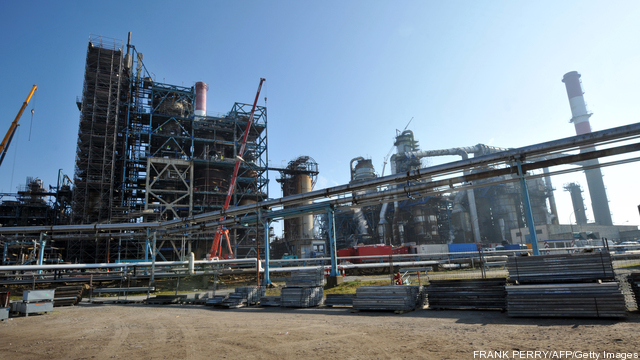
Oil products are needed to fuel the development of, well more oil. Booming oil production in the Bakken formation primarily located in North Dakota and Montana has driven up local demand for diesel fuel used to run the hundreds of rigs and thousands of trucks and locomotives that undergird the industrial supply chain.
“Much of the increase in demand has been fueled by the boom in crude oil production from the new wells in the Bakken Formation in North Dakota’s northwest corner. The demand for these middle distillates rose 80% in North Dakota from 2009 to 2012, providing the incentive to invest in local refineries,” said the EIA in its “Today in Energy” update.
The refineries will be on the smaller side – approximately 20,000 b/d in capacity – and designed to mostly produce diesel. MDU Resources Group and Calumet Specialty Products Partners broke ground yesterday on a plant located west of Dickinson in Stark County, N.D. that is expected to take approximately 20 months to build.
“The facility’s engineering and plant design are in the final stages. Westcon has been selected as the general contractor and Ventech Engineering will be the primary equipment and technology provider. MDU Resources’ construction businesses, Knife River Corporation and MDU Construction Services Group, are among potential subcontractors. Other MDU Resources’ companies involved in the project include Fidelity Exploration and Production Company, which will supply some of the facility’s crude oil; WBI Energy, which will supply natural gas service to operate the facility; and Montana-Dakota Utilities, which will supply the facility’s electricity needs,” according to a statement posted on MDU’s website.
For its part, Dakota Oil Processing plans to construct the Trenton Refinery, which will be located “immediately east of the junction of the BNSF railroad mainline and North Dakota State highway 1804 approximately 15 miles southwest of Williston, North Dakota at a location known as Marley Crossing,” according to the company’s website.
The company also cites increasing naphtha demand used as diluent when transporting heavy oil sands crude from Alberta, Canada as partial justification for building the refinery. “If the Keystone XL pipeline is put into commission, the demand for diluents to ship the approximate 70,000 barrels of oil sands per day will increase as well (many analysts are expecting a tenfold increase in diluent demand),” DOP says on its website.
Natural gas used in the operation of these refineries could help address the flaring issue famously highlighted by a satellite photo showing stranded gas being vented and burned at thousands of oil wells.
“We especially appreciate the support of Governor Dalrymple, other state officials and state agencies. Their permitting process was rigorous, but at the same time they helped us identify and solve problems that are involved in a complex project such as this,” David L. Goodin, president and chief executive officer of MDU Resources said in a statement.
No greenfield refineries have been constructed in the US since the 1970’s.
